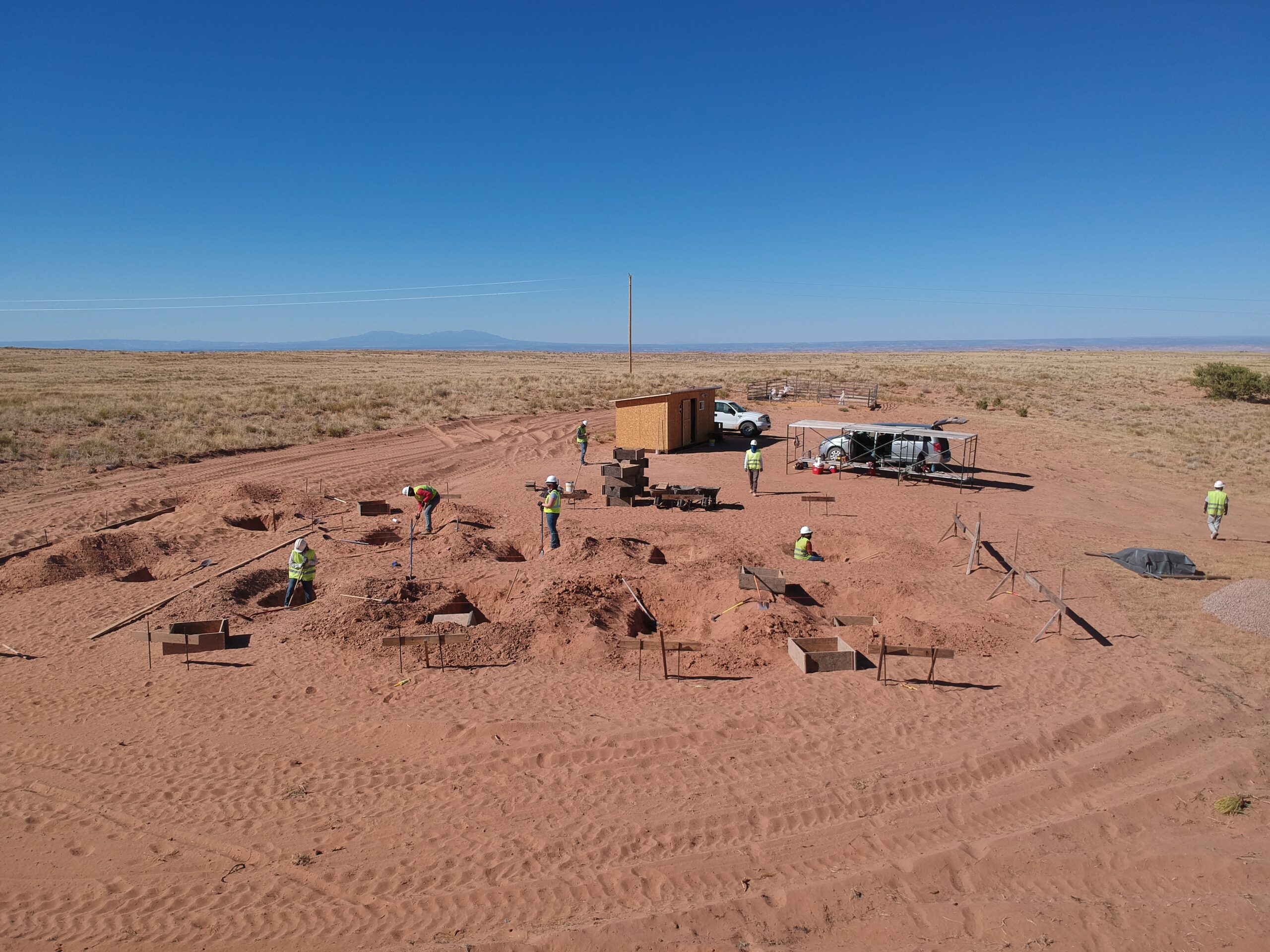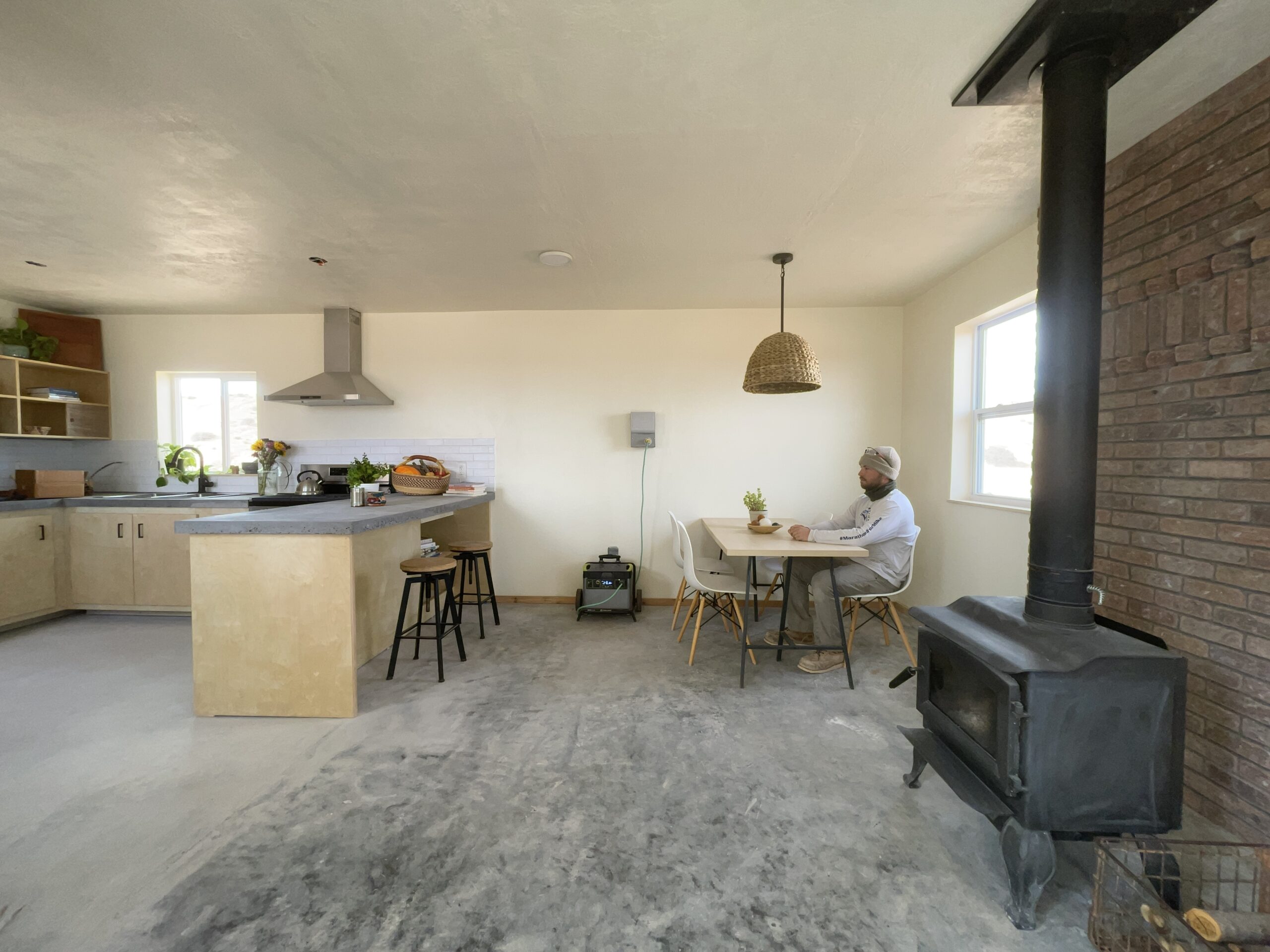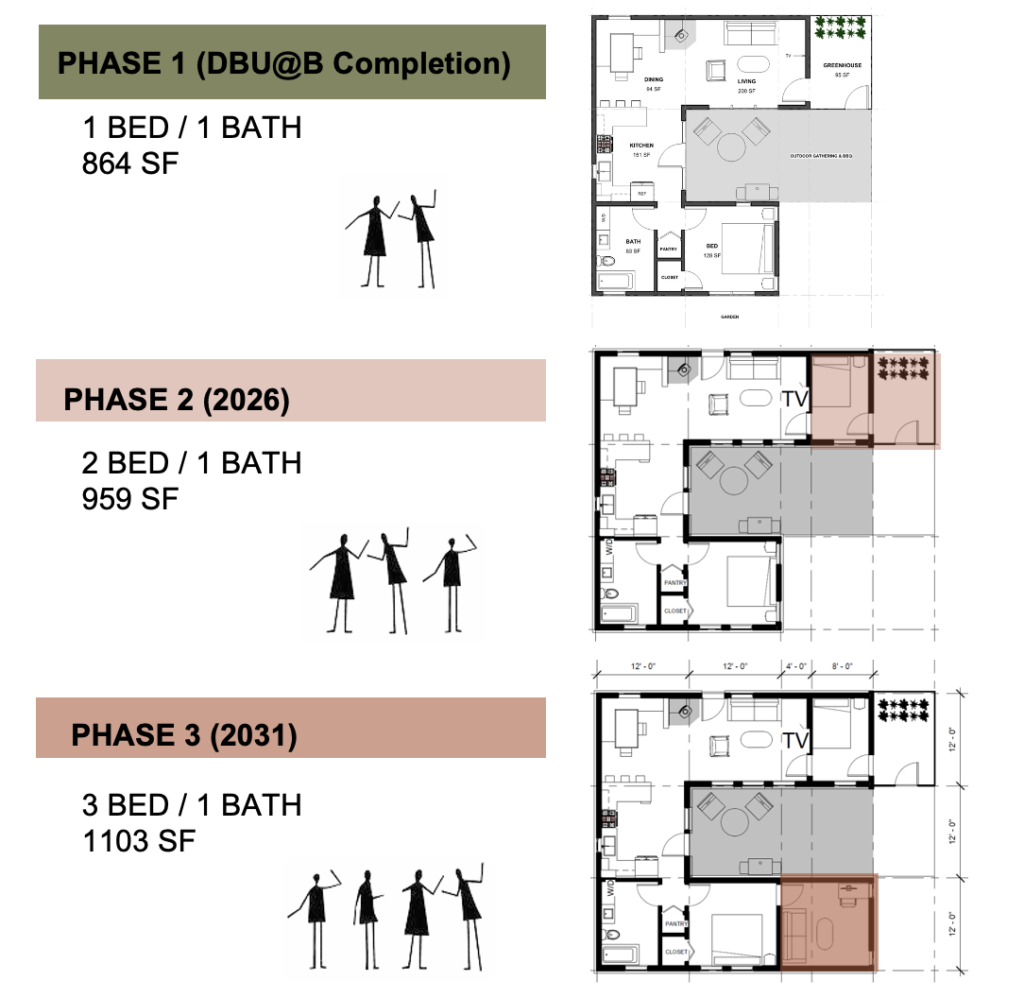
The DesignBuildUTAH program at the University of Utah College of Architecture + Planning engages students in design and construction projects, applying foundational knowledge obtained in the classroom to real-world projects through two experiences: DesignBuildUTAH@Bluff in the Navajo Nation and DesignBuildUTAH@SLC in urban settings.
 Since 2004, the DesignBuildUTAH@Bluff program has allowed students to immerse themselves in hands-on opportunities to design and build full-scale works of architecture in collaboration with residents of the Native communities of San Juan County, in the Utah Four Corners.
Since 2004, the DesignBuildUTAH@Bluff program has allowed students to immerse themselves in hands-on opportunities to design and build full-scale works of architecture in collaboration with residents of the Native communities of San Juan County, in the Utah Four Corners.
As of this year, 16 houses and several projects—including community kitchens, classrooms, cabins, and landscape arts have been constructed in the area by students.
“DesignBuildUTAH@Bluff is simply an extraordinary collaborative learning experience unlike any other,” said Keith Diaz Moore, Dean of the College of Architecture and Planning at the University of Utah. “Students are not only engaged in the intense learning of designing and building a project for a real-life client, but they are doing so engaged with an indigenous community with a different culture and political structure; building side-by-side with the future occupants who learn in a sweat equity model with the students. This results in a project that houses families who are housing precarious—a transformational outcome in its own—but also a transformational learning experience for the students, the occupants and the community.”
In December 2021, six students from the School of Architecture completed the ‘Horseshoe project,’ an 864 sq. ft. expandable house with a greenhouse, a wood-burning stove, an outdoor fire pit, and a water catchment to collect rainwater.
“We designed Horseshoe house with a few ideas in mind, like the lifestyle of the collaborative residents (recipients) and building materials available,” said Isabella Ghabash, a graduate student involved in the project. “One of the recipients is an incredibly talented experienced mason, so we were fortunate to have his craftsmanship on their home.”
Challenges
Most of the construction sites in the Navajo Nation do not have electrical power or running water. Students and instructors design and build the residential projects thinking of homes that fit the recipients’ needs and the environment of the Navajo Nation.
“We focus on eco-friendly and affordable homes in a location with many challenges,” said Atsushi Yamamoto, instructor of the program. “For the Horseshoe project, students built a box that allows off-grid electricity to power the home. Navajo Nation hooks up infrastructure after a home has been built, so this box allows the new homeowners to install solar panels and batteries or run a generator to heat and light their home.”
Sustainable, affordable homes
DesignBuildUTAH@Bluff emphasizes sustainability and respect for the region’s unique social, cultural, and environmental needs. Before starting the design phase, students visit the area and are encouraged to explore alternative building methods, unique materials and innovative solutions.
 Over the last two years, due to the COVID-19 pandemic, the home recipients attended online classes to strengthen the connection between students and the client. Students design their projects considering the ‘Sweat Equity’ concept, allowing recipients the opportunity to assist in the build so they can possibly expand their homes in the future.
Over the last two years, due to the COVID-19 pandemic, the home recipients attended online classes to strengthen the connection between students and the client. Students design their projects considering the ‘Sweat Equity’ concept, allowing recipients the opportunity to assist in the build so they can possibly expand their homes in the future.
“We aim to provide learning opportunities not only for our architecture students but also the home recipients,” said Yamamoto. “The students completed the core parts of the construction, and since we worked with recipients together, they are confident that they will finish the rest of the work of their new home.”
DesignBuildUTAH@Bluff works in partnership with the rural and Native communities of San Juan County in the Utah Four Corners. Annually, the recipients are chosen based on the recommendations of the Utah Navajo Trust funding, Navajo Revitalization Fund, and local chapter houses.
During the construction semester, students live in Bluff, north of the Navajo Nation. The design phase occurs in the summer, and the construction phase is from September to November due to severe weather during the rest of the year.
Partnerships
In 2021, the Horseshoe project took 12 weeks of on-site work and more than 5,000 person-hours. The Navajo Revitalization Fund provided most of the materials’ funds, and the rest of the materials were donated by Big-D Construction, Mountain Fiber Insulation, and JRC Lighting.
Architecture firms, businesses, and professionals can donate funds or volunteer in the program. Through the years, donors like The Sorenson Legacy Foundation have helped support DesignBuildUTAH@Bluff as one of the top programs in the nation that focuses on sustainable housing with a sweat equity model.
“We are proud to support the work at DesignBuildUTAH@Bluff,” said Lisa Meiling, Executive Director of The Sorenson Legacy Foundation. “This program is a real example of the best in humanity, using our talents and resources to lift others. We search for projects that enable people to be self-sufficient and empowered. When recipients are on the sites participating in the construction process, we believe that these homes will be cared for and improved for a long time.”
DesignBuildUTAH@Bluff instructors are currently meeting potential donors for the 2022 project. Companies interested can donate wood, windows, plumbing, electric materials, or tools. If you are interested in supporting the program, please contact Angie Harris Roberts at angie.roberts@utah.edu. If you want to contribute with materials or volunteer, please contact Hiroko Yamamoto at hiroko@arch.utah.edu.